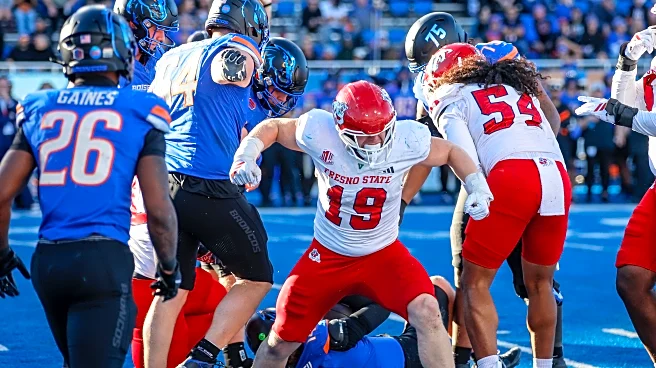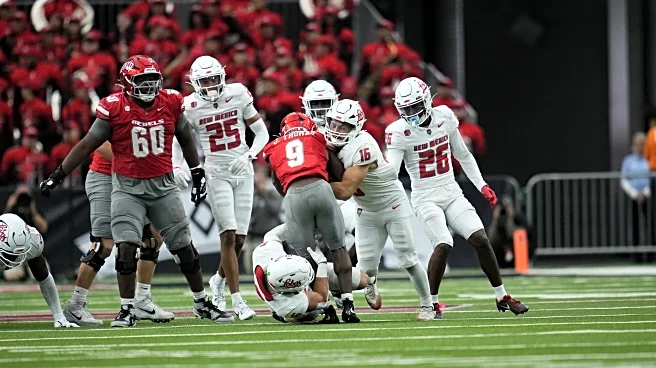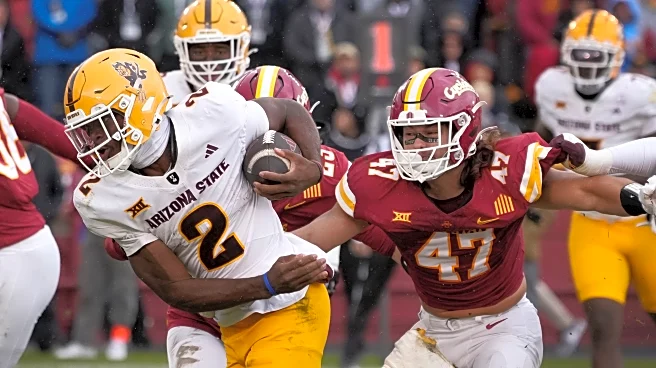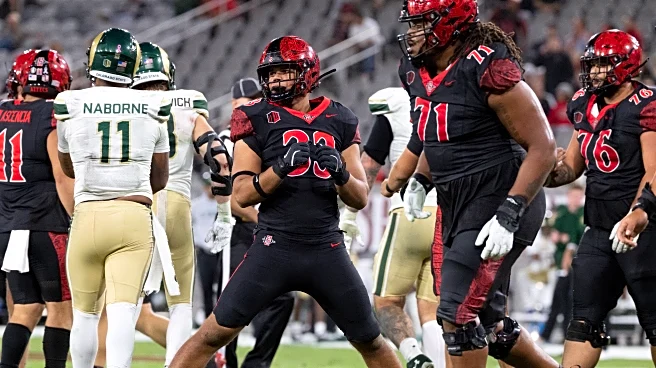What's Happening?
San Diego State Aztecs, under the leadership of Sean Lewis, have achieved a record of seven wins and one loss, including six consecutive victories. Despite their strong performance, the team remains unranked
in the Associated Press Top 25 College Football poll. In the latest poll, San Diego State earned 30 points, effectively placing them at No. 29, with their highest ranking being No. 15 on one ballot. The Aztecs are the only team from the Mountain West Conference still receiving votes, as other teams like Boise State and UNLV have dropped out following recent losses. San Diego State's recent 24-7 victory over Wyoming showcased their control and discipline, with standout performances such as Lucky Sutton's career-high 158 rushing yards.
Why It's Important?
The lack of recognition for San Diego State in the national rankings highlights a potential bias or oversight in the polling system, which could impact the team's visibility and opportunities for postseason play. Despite their strong record, the Aztecs' absence from the Top 25 could affect their recruitment, media coverage, and overall program prestige. This situation underscores the challenges faced by teams outside the traditional power conferences in gaining national attention. The Aztecs' continued success could force a reevaluation of their standing among voters, potentially leading to greater recognition and opportunities in the future.
What's Next?
San Diego State's upcoming games include a trip to Hawaii and a home game against Boise State, followed by matches against San Jose State and New Mexico. These games are crucial for the Aztecs to solidify their position and potentially break into the national rankings. Success in these matches could enhance their national perception and increase pressure on poll voters to acknowledge their achievements. The team's performance in these games will be pivotal in determining their postseason prospects and overall recognition in college football.
Beyond the Headlines
The situation with San Diego State raises questions about the criteria and transparency of the college football ranking system. It highlights the potential for systemic biases that favor teams from more prominent conferences, which could have long-term implications for the sport's competitive balance. This case may prompt discussions about how rankings are determined and whether reforms are needed to ensure fair representation of all teams based on performance rather than historical prestige.













